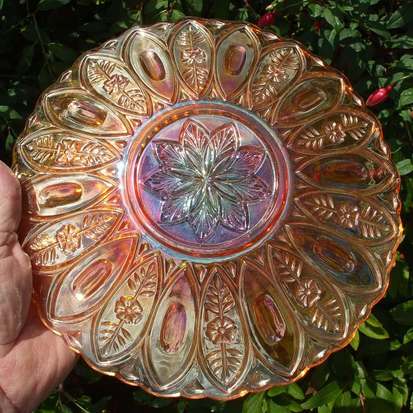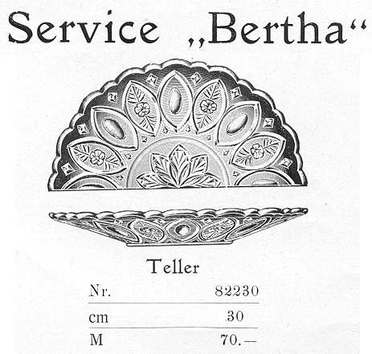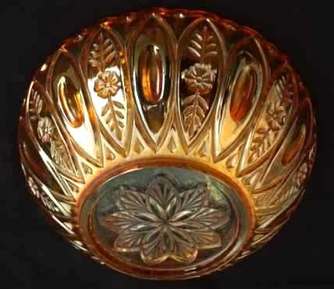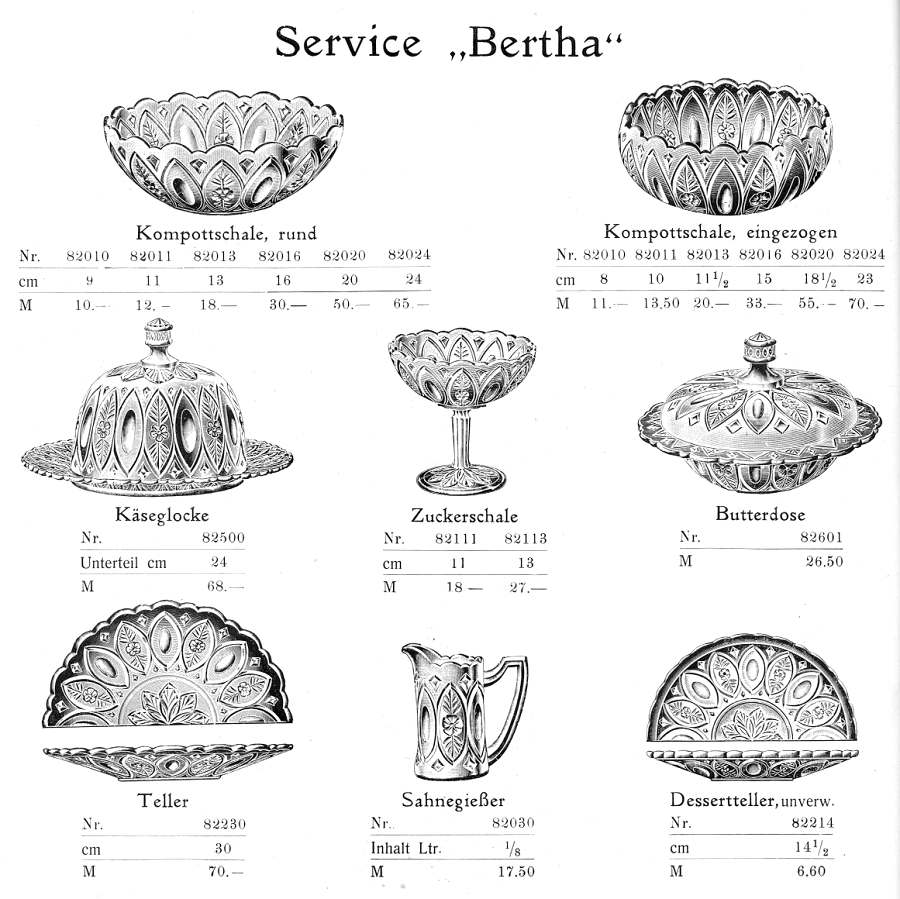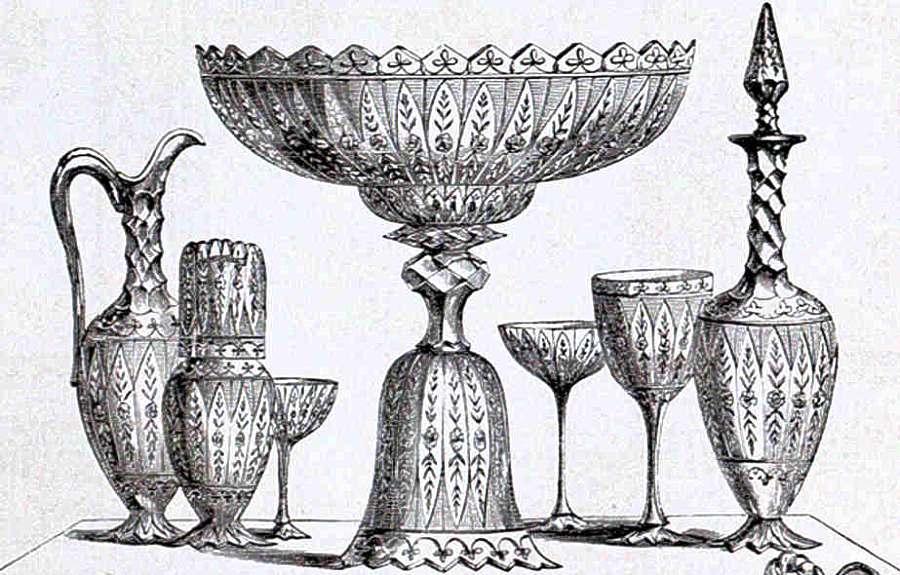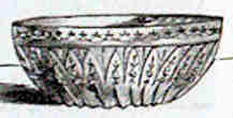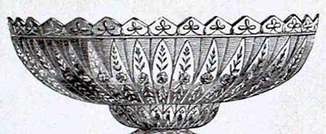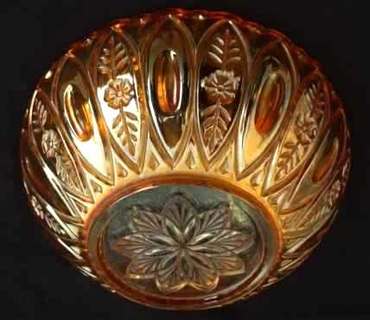Collectors Facts - Bertha, Brockwitz
|
Shapes:
Bowls - 2 sizes, 9 inch and 4 inch
Plate - 10 inch cake plate
|
Colours:
Marigold
Marigold
|
|
Bertha, exterior pattern, Brockwitz, Germany. Thanks to Alan Henderson for the photos of his 9 inch bowl (the largest size in the catalogue) and the large cake plate (10 inches), and to Siegmar Geiselberger for his image of the Brockwitz 1928 catalogue. “Bertha” was Brockwitz’ name for this exterior pattern, and it entered their repertoire in 1928, as shown in this extract from their 1928 catalogue, courtesy of Siegmar Geiselberger. Apparently, it had a short-lived production run, as it doesn’t feature in any other Brockwitz catalogues we have studied either before or after that date. The choice of a female name for the pattern is interesting, as most Brockwitz patterns were named after locations (such as “Zurich”, “Kopenhagen”, “London” and “Boston”) with occasional exceptions such as the floral “Rosen”. One might wonder if Bertha was a female relative of one of the directors? |
Bertha 9 inch bowl. Photo courtesy of Alan Henderson
|
|
Shapes in Carnival Glass Bowls ("Kompottschale") in two sizes are currently known in Carnival: 9 inches and 4 inches (24 cm and 9 cm) respectively. These are the largest and the smallest of the sizes made by Brockwitz. The plate ("Teller") is known in a 10 inch size (reported by Alan Henderson on our Carnival Glass NetworK Facebook Group in July, 2017). It is slightly smaller than indicated in the Brockwitz catalogue – so it is entirely possible that a larger 12 inch / 30 cm one was also made. However, Brockwitz advised their customers in their catalogues that their measurements were always approximate, writing “We beg to advise our clients that we cannot be held responsible for the measures and sizes in this catalogue. These measures and sizes must always be understood as “about”. Other shapes not yet reported in Carnival As shown in the catalogue, right, they are: round and cupped-in bowls ("Kompottschale") in various sizes other than those reported above large covered cheese ("Kaserglocke") covered butter ("Butterdose") cream jug and sugar ("Sahnegiesser" and "Zuckerschale") small 14.5 cm dessert plate - just under 6 inches ("Dessertteller"). |
|
Inspiration
We were browsing a book of line illustrations featuring the most notable items displayed at the World Fairs (Expos or Exhibitions) in the 1800s, when we saw a range of glassware that literally stopped us in our tracks. Many of the major glassmakers exhibited at these international exhibitions, while many others went to get ideas. The range that caught our eye was from 1862, and is shown on the right. The items included a centrepiece bowl and stand, and a variety of other bowls and drinking vessels. But ... it was the pattern that transfixed us … it was so very similar to Brockwitz Bertha design. Is it possible that items in this early pattern were owned by the directors or designers at Brockwitz? Maybe they wanted to recreate this older, popular design. Whatever the reason, the similarity between the patterns is very clear. Maybe they wanted to recreate this older, popular design. Or perhaps the Brockwitz designer saw it in the very same book of drawings from the World Fairs that we showed you here. Whatever the reason, the similarity between the patterns is very clear. |
Illustrations from the Masterbook of Drawings featuring objects exhibited at the 1862 London and 1867 Paris International Expositions. Public Domain. Wikimedia and Heidelberg University
|
See more Collectors Facts
